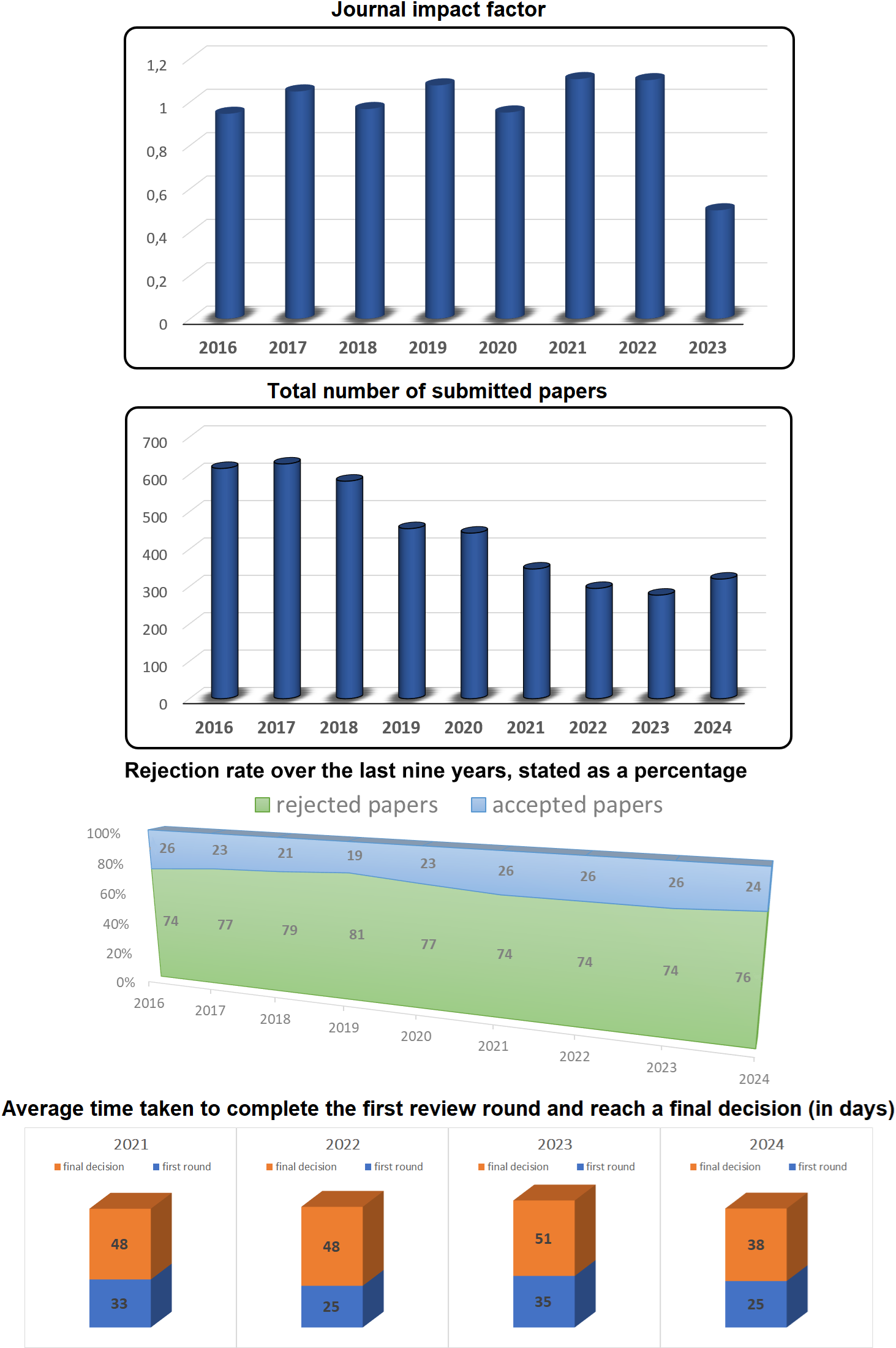About the Journal
5-Year Impact Factor: 0.8 [DOI: 10.13164/re]
Since 1992, the Radioengineering Journal has been publishing original scientific and engineering papers from the area of wireless communication and application of wireless technologies. The submitted papers are expected to be original research works dealing with electromagnetics (antennas, propagation, microwaves), signal processing, analog and digital circuits, optics and related fields.
The Radioengineering Journal consistently makes every effort to publish submitted papers as quickly as possible. The first round of reviews should be completed within two months. Of course, the duration of the review process may also be influenced by the specificity of the paper topic. Then, authors are expected to improve their manuscript within one month and resubmit a new paper version via the online submission system. If substantial changes are recommended and further reviews are requested by the reviewers, the publication time is prolonged. The whole review process fully respects COPE Ethical Guidelines for Peer Reviewers.
The Radioengineering Journal is the member of the Sister Societies' Publications of the IEEE Communications Society. The Radioengineering Journal is covered by Thomson Reuters being indexed and abstracted in Science Citation Index Expanded and Journal Citation Reports. The Radioengineering Journal is covered by the Directory of Open Access Journals, is listed in INSPEC and covered by SCOPUS.
The Radioengineering Journal is an open access journal. All content is freely available without charge to interested users who are allowed to read, download, copy, distribute, print, search, or link to the full texts of the articles, or use them for any other lawful purpose, without asking prior permission from the publisher or the author. This is in accordance with the BOAI definition of open access.
From 1st January 2022, several significant changes will be launched. The first of them applies to authors of papers accepted for publication: publication fee becomes mandatory for all published papers. The requested fee, however, is much lower than in many other impacted journals. For details, potential authors should consult section Publication Payments. By submitting their paper, it is supposed that all authors agree to pay publication fee at appropriate amount. Furthermore, accepted and paid articles, including their DOI, will be published online soon after the publication fee is received (within a week usually). The printed version of the journal will be published as before four times a year: in April, June, September and December. Since Radioengineering is fully open access journal, printed samples will not be sent to the authors. Finally, the last change concerns the reviewers. Reliable work of referees will be awarded with a publication discount, namely 40 EUR (1000 CZK) per one comprehensive review. Recognizing that the careful and responsible work of highly qualified reviewers is vital for the journal, the Editorial Board would like to encourage interested experts to send email supplemented with their professional CVs to chief@radioeng.cz
Since the middle of 2022 we decided to open few, carefully selected special issues. Each address emerging problems of contemporary radiofrequency communication systems. For details, please visit web section Opened Special Issues
Top five: The most cited papers (Web of Science score valid to date 19. 6. 2025)
[1] Biolek, Z., Biolek, D., Biolkova, V. SPICE Model of memristor with nonlinear dopant drift. Radioengineering, 2009, vol. 18, no. 2, p. 210–214. (897 citations)[2] Biolek, D., Senani, R., Biolkova, V., Kolka, Z. Active elements for analog signal processing: classification, review, and new proposals. Radioengineering, 2008, vol. 17, no. 4, p. 15–32. (606 citations)
[3] Chua, L. O. Everything you wish to know about memristors but are afraid to ask. Radioengineering, 2015, vol. 24, no. 2, p. 319–368. (427 citations)
[4] Henniger, H., Wilfert, O. An introduction to free-space optical communications. Radioengineering, 2010, vol. 19, no. 2, p. 203–212. (261 citations)
[5] Biolek, D., Di Ventra, M., Pershin, Y. V. Reliable SPICE simulations of memristors, memcapacitors and meminductors. Radioengineering, 2013, vol. 22, no. 4, p. 945–968. (135 citations)
